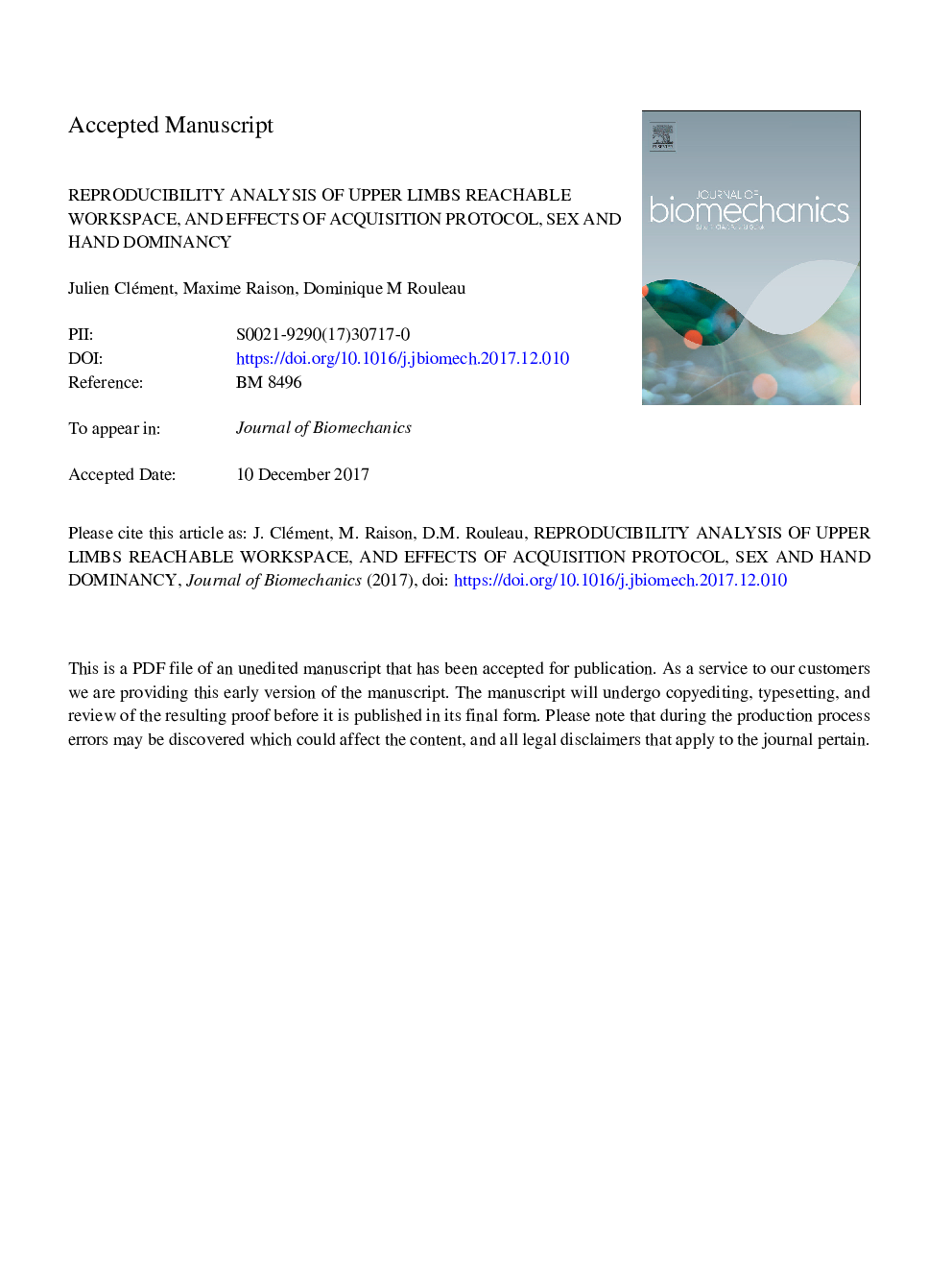| Article ID | Journal | Published Year | Pages | File Type |
|---|---|---|---|---|
| 7236635 | Journal of Biomechanics | 2018 | 25 Pages |
Abstract
None of the physical testing, nor the goniometers currently used to assess upper limb function have a high validity, sensitivity or reliability. The reachable workspace, i.e. the area covered by the farthest points a subject can reach by hand without moving his/her body, shows promise but has yet to be validated, particularly in terms of reproducibility. Therefore, this study aims to evaluate the reproducibility of the reachable workspace over a period of several weeks, and to assess the effects of two proposed acquisition protocols, as well as those of gender, and hand dominancy. Shoulder movements were recorded using a motion capture system on 10 female and 10 male healthy subjects during a random protocol, i.e. simply asking them to achieve the farthest points they could reach with their hands, and during a standardized protocol, i.e. asking them to perform predefined shoulder elevations while keeping their trunk and elbow straight. The standardized protocol was repeated 7â¯weeks later. Repeated measures showed no significant difference, good to excellent intraclass correlation coefficients (0.46-0.81) and small bias (0.0-1.2%). The random protocol provided significantly lower and more scattered values for the reachable workspace (80.0â¯Â±â¯22.6% vs. 91.0â¯Â±â¯8.1%, pâ¯=â¯.004), whereas gender and hand-dominancy had no effect. This study showed that the reachable workspace was highly reliable over a period of 7â¯weeks and that both upper limbs provided similar results. It could be used to monitor various pathologies of the upper limbs and to assess treatment efficiency, using a subject's healthy limb as reference.
Related Topics
Physical Sciences and Engineering
Engineering
Biomedical Engineering
Authors
Julien Clément, Maxime Raison, Dominique M. Rouleau,
